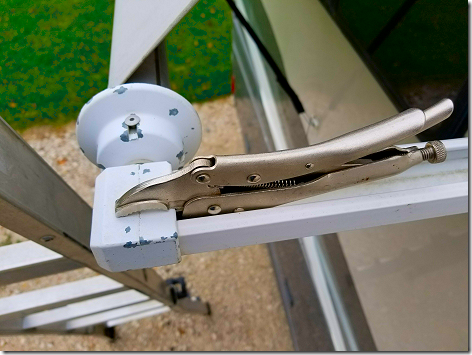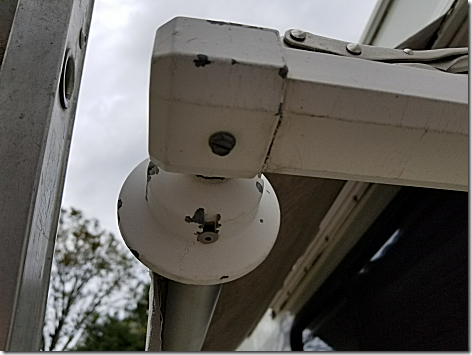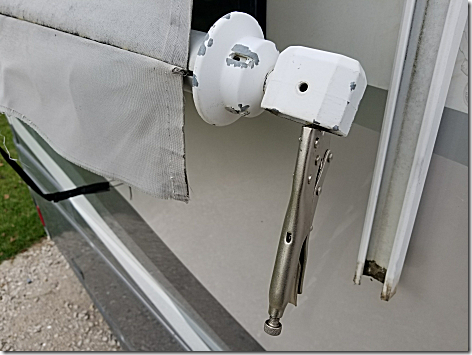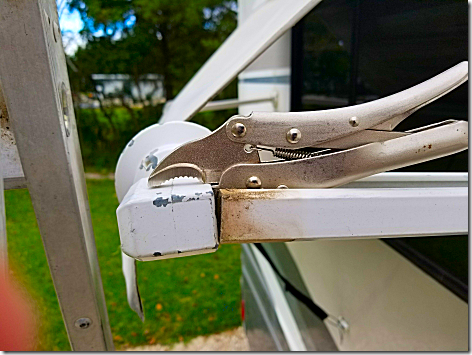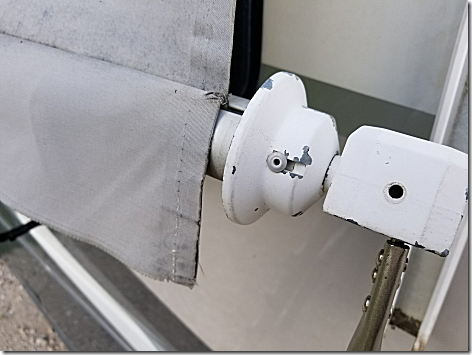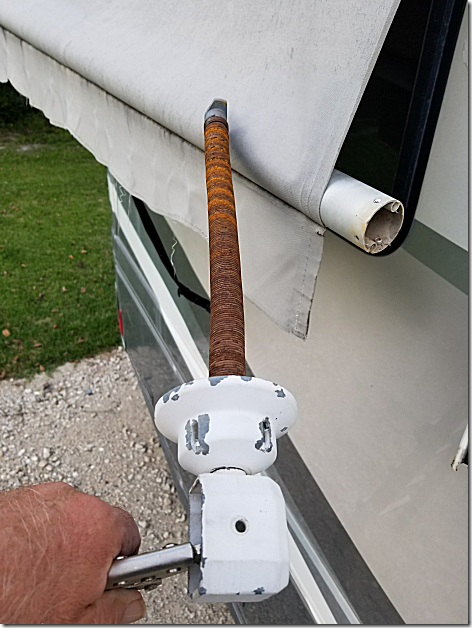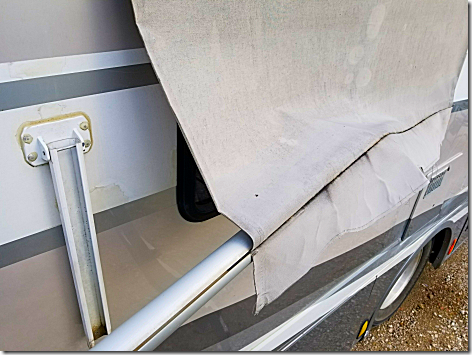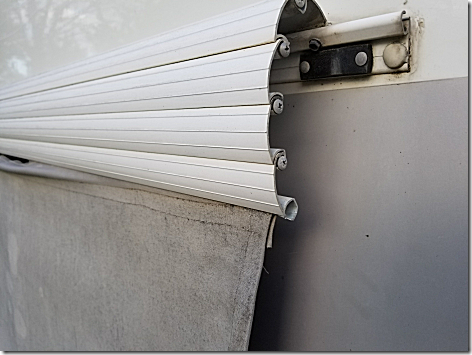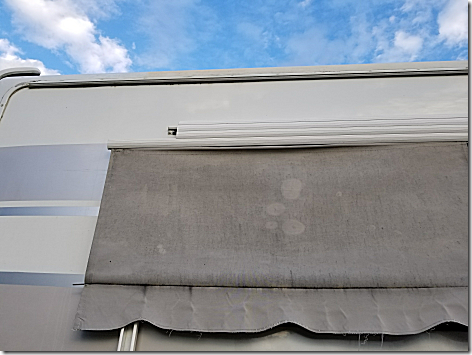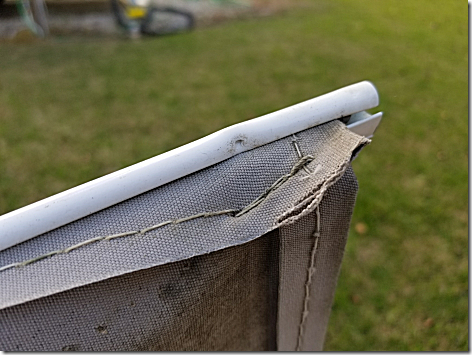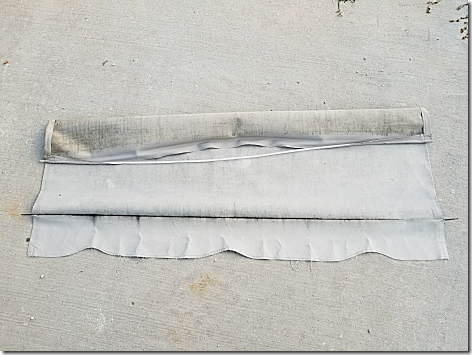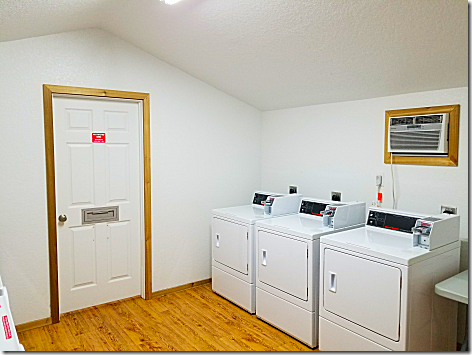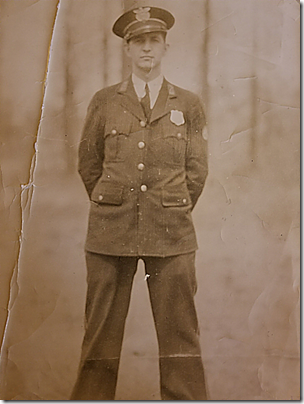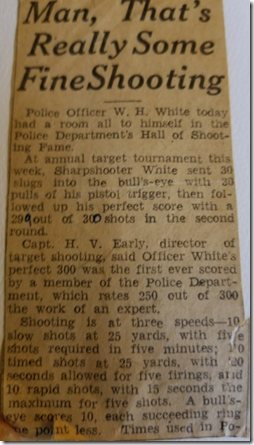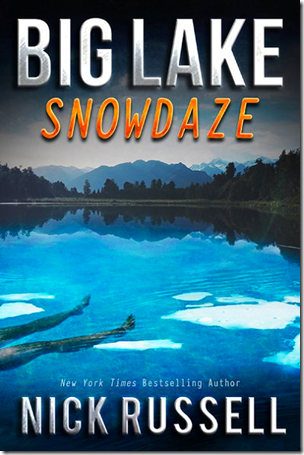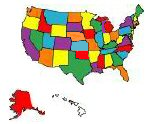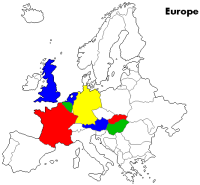Awning Off, Awning On . . .
With nothing on our slate for today, we had a nice relaxing morning, reading and computing.
About 2pm I went outside to take down the other rear awning, Since I’d down the first one about a month ago, this one went faster.
First off I started by clamping the flange that connects to the torsion spring. This allows me to control the unwinding of the spring.
Next I removed the screw that fastens the flange to the tube.
Then I pulled the flange off the arm while holding the vice grips to keep the spring from unwinding. After lowering the arm to the side of the rig, I carefully unwound the spring, counting the turns so I would know how many turns to rewind it.
At this point I put the now-loosened flange back on the arm.
This let me now drill out the rivets so I could remove the spring.
Now pulling the tube from the other end, I could pull it off the bottom of the awning fabric.
So now I should have been able to pull the fabric off the top rail, but it wouldn’t budge. So I removed the screw right above the rail that holds the first link of the cover in place.
This let me pull the fabric and the cover segment out from the other side.
This let me see that the reason the fabric wouldn’t come out is the fact that the rail was crimped on each end.
Normally if they want to lock the fabric in place they just use a small screw through the rail and into the fabric.
But after I use a screwdriver and a pair of pliers to open the channel, the fabric slide right out.
Tomorrow I’ll drop this one off at Sundowner Canvas and pick up the new one. I am going to ask them to hold off on doing the next one until I reinstall the new one. That’s to be sure that everything is OK with how this one was done.
I did get a chance to check out the laundry room here at Petticoat Junction RV Park and it looks pretty nice. We normally don’t use a park laundry because we have our own washer/dryer, but Jan does occasionally like to do her throw rugs in one.
Really nice and clean.
I mentioned earlier that Jan and I have been going through a lot of old photos, many I’ve never seen before.
My father was a police officer in Birmingham AL starting the 1930’s. During WWII he enlisted in the Navy and ended up in the Shore Patrol, guarding the Navy Pier in Chicago.
Here’s a photo of him in his uniform.
After the war he came back to the Birmingham Police Department as a Detective Sergeant until he retired in1951. Then he and my mother moved down to Gulf Shores, AL where they opened a motel right on the beach.
I always knew he was an excellent shot, starting when he began to teach me to shoot when I was six. Somewhere along the line I was told that he had won the Alabama State Pistol Championship five years in a row, until finally they pretty much asked him to stop competing and give someone else a chance.
But I never had any hard info on this until I came across this clipping from the Birmingham newspaper. I’m assuming this was from the 1930’s since they refer to him as a police officer and not a detective.
Since the clipping is kind of hard to read, I’ve transcribed it below.
Man, That’s Really Some Fine Shooting
Police Officer W. H. White today had a room all to himself in the Police Department’s Hall of Shooting Fame.
At annual target tournament this week, Sharpshooter White sent 30 slugs into the bulls-eye with 30 pulls of his pistol trigger, then followed up his perfect score with 29 out of 30 shots in the second round.
Capt. H. V. Early, director of target shooting said Officer White’s perfect 300 was the first ever scored by a member of the Police Department, which rates 250 out of 300 the work of an expert.
Shoot is at three speeds – 10 slow shots at 25 yards, with five shots required in five minutes; 10 timed shots at 25 yards, with 20 seconds allowed for five firings, and 10 rapid shots , with 15 seconds the maximum for five shots. A bulls-eye score 10, each succeeding ring one point less.
So for the first round he got all thirty shots in the bulls-eye, while on the second round he got 29 shots in the bulls-eye and 1 shot in the 9 ring.for a total of 299 out of 300.
I’m about halfway through Nick Russell’s latest book, Big Lake Snowdaze and it’s hard to put down, even to recharge. Well worth a read.
Get your copy before Amazon runs out of electrons.
The Headline of the Day: Another Human Foot Washes Ashore in Canada. That Makes 13 . . .
Thought for the Day:
“It is forbidden to calculate the total sum of barnyard fowls previous to the completion of their incubation.”
gsgsg



